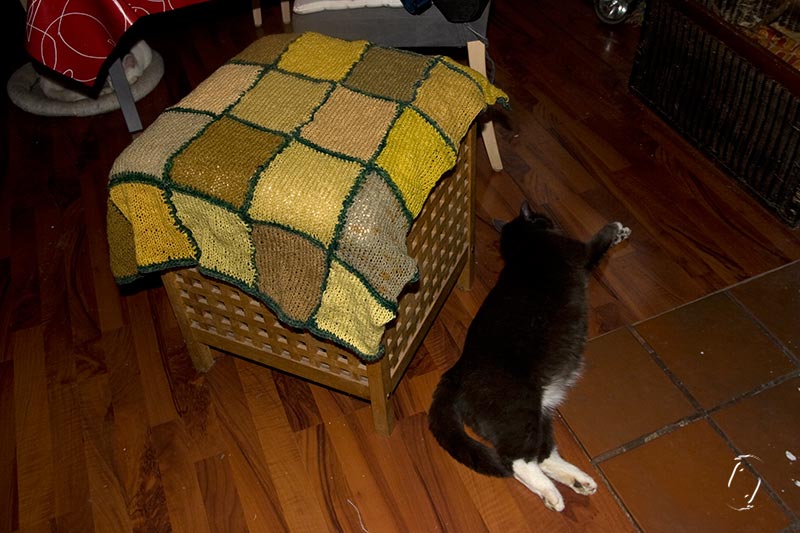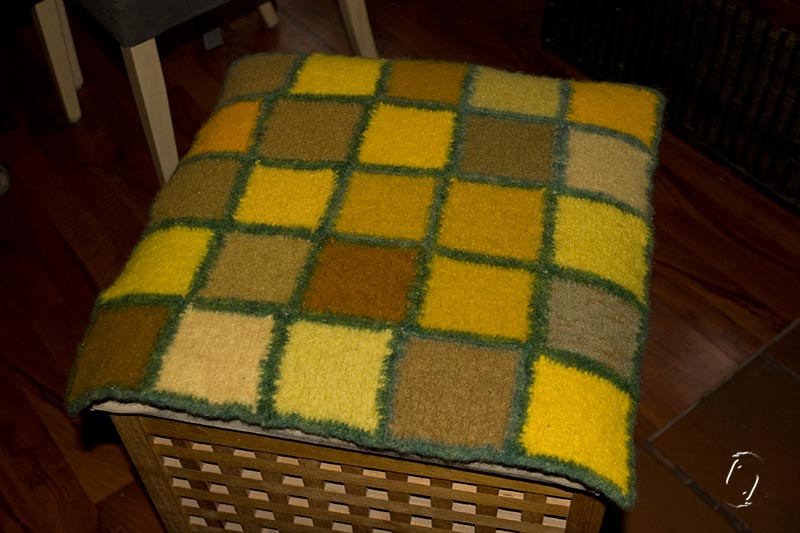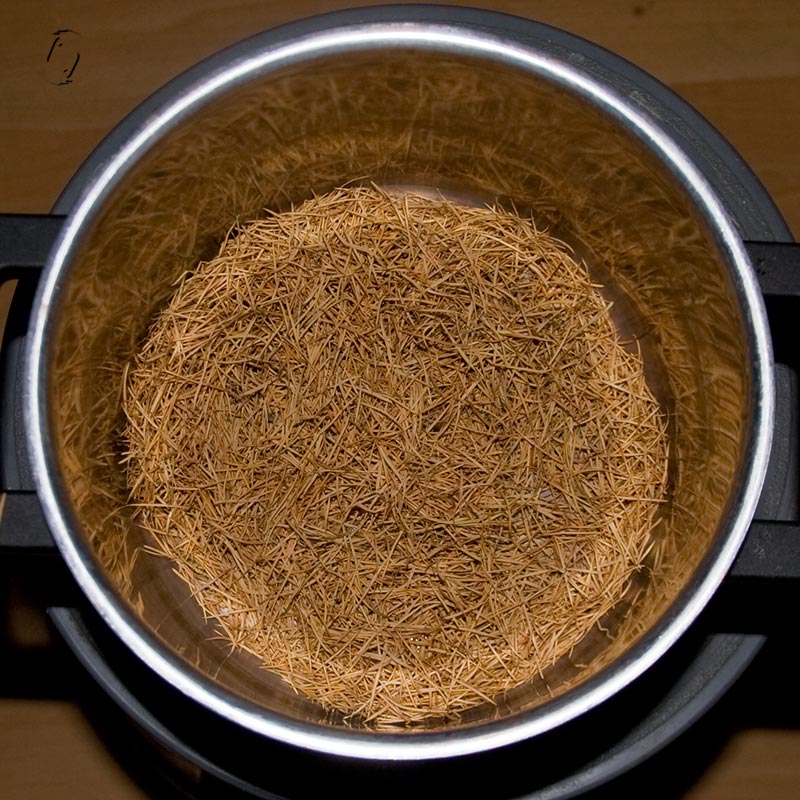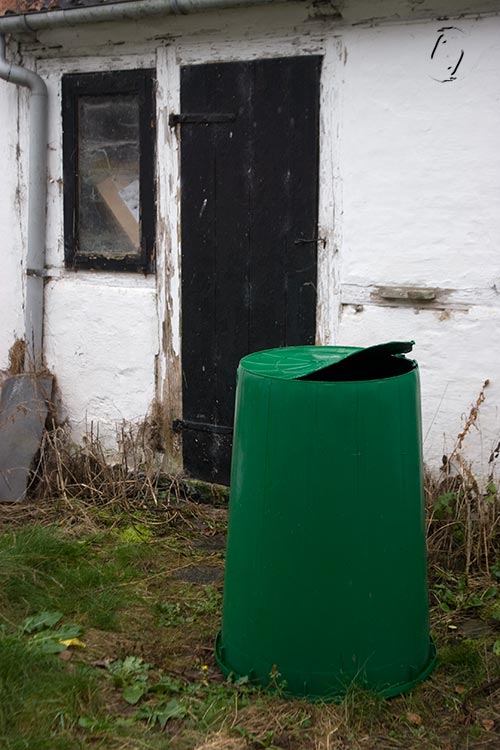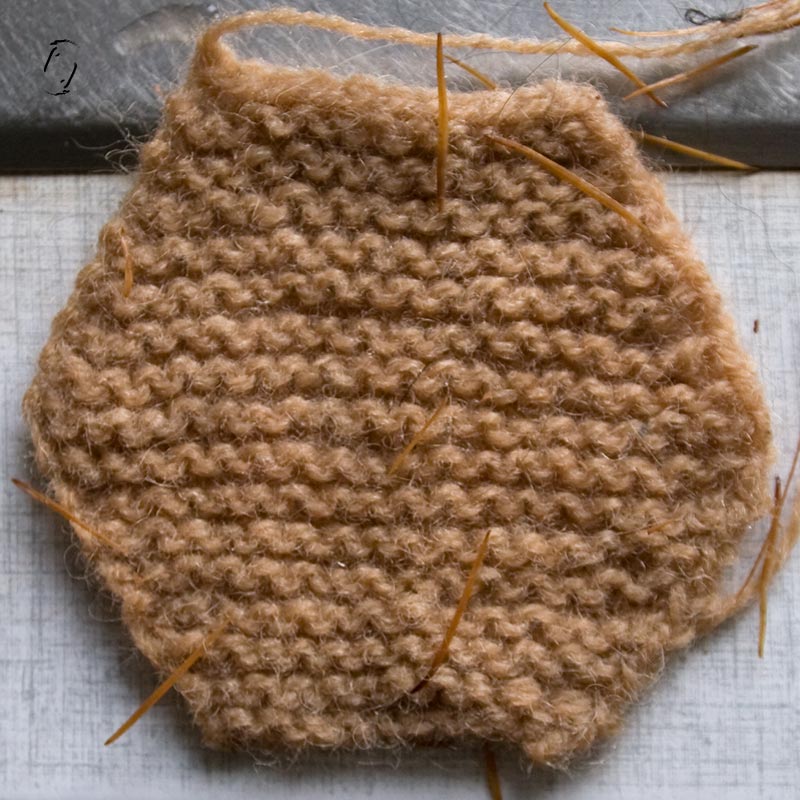I decided I wanted another blanket covering the box by the stove, and that it would be a fine way to test some of the plant dyed yarns. The original lid has white cloth on it, not very practical for cats with muddy paws.
The plan is to leave it there and take new pix after summer and after a year, after wash etc. to see how lightfast they are. Especially useful info for the tapestry project!
To make it sturdier I decided on a felted blanket, so I knit some squares very loosely, then threw it in the washing machine with soap flakes which are neutral and should not disturb the colours is my previous experience.
- Start size: 75×85 cm, rather a lot larger than my swatch had indicated!
- Size after 60 degree wash: 46 x 47 cm
- Blocked: 50 x 50 cm
- Colour development: No loss but some seem to have changed a bit. I guess I’ll have to find those skeins in the box and compare.
- Yarn used: 185 g
I’d expected to have to do another 90 degree wash and perhaps tumble dry AND handfelt a bit on the long side. It must have been the larger size and being washed with other items, because it ended up smaller than I wanted in the first wash. So instead I had to block it a bit. Actually I should have blocked it more, but whatever.
I used the same yarn base for all squares, and they were identical when I assembled them – so it’s quite funny how some now look smaller than the others. It’s fine, I meant it to be a bit random and organic looking. Now to see if I can get used to all that yellow. I’ve been saying that it’s amazing how nearly all plant dyed yarns seem to go well together. Well, they don’t quite. When I’m done with this, suntesting etc. I think it might have a meeting with an indigo vat. Which in itself will be interesting!
Of course just now we won’t have any sun to speak of for about a week at least, so the photo conditions are not the best. But could I wait? Noooo….. I’ll have to compare colours to the remaining skeins. But it looks pretty much the same as what I put in the machine. Some plants are there twice, but dyed with different methods or mordants/modifiers.
I’m going to have to follow up later with the actual real colours in proper light, it’s just too dark here inside and out.
Filtetæppe
For at komme i gang med at bruge noget af mit plantefarvede garn, besluttede jeg at lave et lille tæppe til brændeovnstaburetten. Den har et låg med hvidt stof, ikke så smart til dovne katte med mudrede tæer, men vi har hidtil bare “midlertidigt” haft et spejdertæppe lagt hen over.
Så jeg tænkte jeg samtidig kunne bruge det til at lysteste nogen af planterne og strikkede derfor nogen meget løse firkanter af hver sit nøgle garn, så jeg bagefter kunne filte tæppet uden at ende med et bræt. Jeg har primært brugt de ældste fra 2011 fordi jeg også går og lurer på, om de falmer i sig selv af at bare ligge.
Det blev lidt rigeligt stort i forhold til min strikke-vaskeprøve, men jeg smed det frisk i maskinen på 60 grader med sæbespåner og et par håndklæder. Jeg havde egentlig regnet med, at det også skulle tumbles og måske vaskes på 90, men det kom faktisk mindre ud af maskinen end jeg skulle bruge! Så det måtte lige blokkes i stedet. Start: 75×85 cm, efter vask: 46×47, blokket: 50×50.
Farverne ser ikke ud til at have ændret sig i styrke, men nogen virker anderledes, så jeg må nok have kassen frem og finde de respektive nøgler, så jeg kan sammenligne. Sjovt nok er nogen af firkanterne mindre end de andre, altså filtet uens, for jeg har brugt samme garn hele vejen igennem. Men det er helt ok. Nu skal jeg så lige se om jeg kan vænne mig til alt det gule. Ellers ryger det i en gang indigo når jeg er færdig med at teste lysægthed. Der kommer et opdateret billede af de reelle farver, når vejret er til at fotografere uden blitz.
Jeg har brugt i alt 185 g garn.

